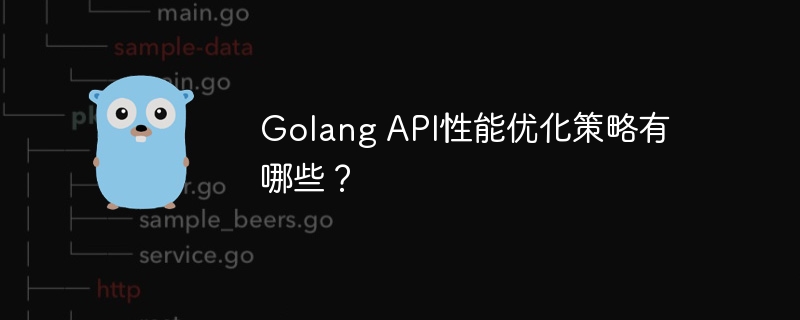
Strategy: Concurrency: Use goroutine to implement concurrent request processing. Caching: Use Redis to cache common requests or data. Index: Create indexes for database tables to increase query speed. Query Optimization: Optimize queries using WHERE and ORDER BY clauses. Data structure optimization: Choose appropriate structures such as maps and slices. Reduce HTTP header size: Enable HTTP compression and remove unnecessary headers. Example: Get All Users API uses Redis to cache the user list and process user data concurrently through goroutines to improve response time and throughput.

Performance optimization is crucial when developing a high-performance Golang API. Below is a list of strategies that can significantly improve your API's response time and throughput.
sync.WaitGroup or channels to implement concurrent request processing. context.Context to manage the life cycle of concurrent requests. goroutines, channels and sync.Mutex to achieve parallel processing. memcached or Redis to store common requests or data. sync.Map or map to cache data locally to avoid frequent database accesses. gorm.Model.Index tag to define the index. WHERE clause in the SELECT statement to filter the returned data. ORDER BY clause to sort the returned data. map, slice andstruct. Suppose we have a Golang API to get all users. Here are some ways we can apply these optimization strategies to improve performance:
import (
"context"
"fmt"
"sync"
"github.com/go-redis/redis/v8"
"github.com/go-sql-driver/mysql"
"github.com/google/uuid"
)
type User struct {
ID uuid.UUID `gorm:"type:uuid;primary_key"`
Name string
Age int
}
// 使用 Redis 缓存用户列表
var redisClient *redis.Client
// 使用 goroutine 并发读取用户数据
func getUsers(ctx context.Context) ([]User, error) {
var wg sync.WaitGroup
users := make([]User, 0)
ch := make(chan User)
// 从 Redis 获取缓存的用户列表
cachedUsers, err := redisClient.LRange(ctx, "users", 0, -1).Result()
if err != nil {
return nil, err
}
// 如果缓存中没有用户列表,则从数据库中查询
if len(cachedUsers) == 0 {
var dbUsers []User
if err := db.Where("active = ?", true).Find(&dbUsers).Error; err != nil {
return nil, fmt.Errorf("failed to query users: %w", err)
}
// 更新 Redis 缓存
if len(dbUsers) > 0 {
go storeUsersInRedis(ctx, dbUsers)
}
users = dbUsers
} else {
// 从 Redis 中获取用户列表并转换为模型对象
for _, u := range cachedUsers {
var user User
if err := user.UnmarshalBinary([]byte(u)); err != nil {
return nil, fmt.Errorf("failed to unmarshal user: %w", err)
}
ch <- user
}
}
// 并发处理用户数据
go func() {
for u := range ch {
wg.Add(1)
go func(user User) {
defer wg.Done()
// 在这里处理用户数据
fmt.Println(user.Name)
}(u)
}
}()
wg.Wait()
return users, nil
}
// 将用户列表存储在 Redis 中
func storeUsersInRedis(ctx context.Context, users []User) {
pipe := redisClient.Pipeline()
for _, u := range users {
userBytes, err := u.MarshalBinary()
if err != nil {
// 处理错误
}
pipe.RPush(ctx, "users", userBytes)
}
_, err := pipe.Exec(ctx)
if err != nil {
// 处理错误
}
}By applying these strategies, we can effectively optimize the performance of the API and improve response time and throughput.
The above is the detailed content of What are the Golang API performance optimization strategies?. For more information, please follow other related articles on the PHP Chinese website!




